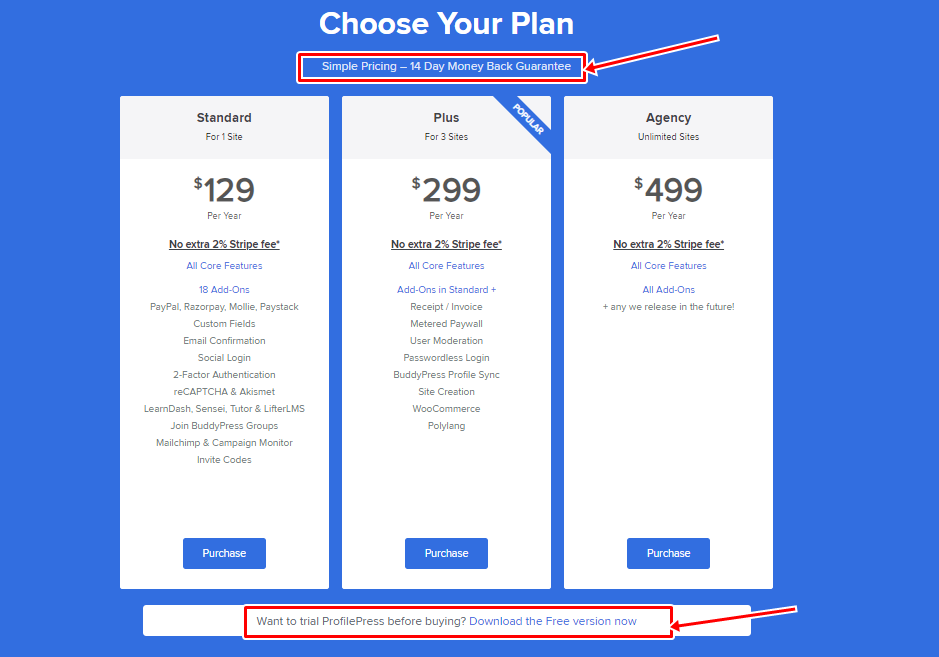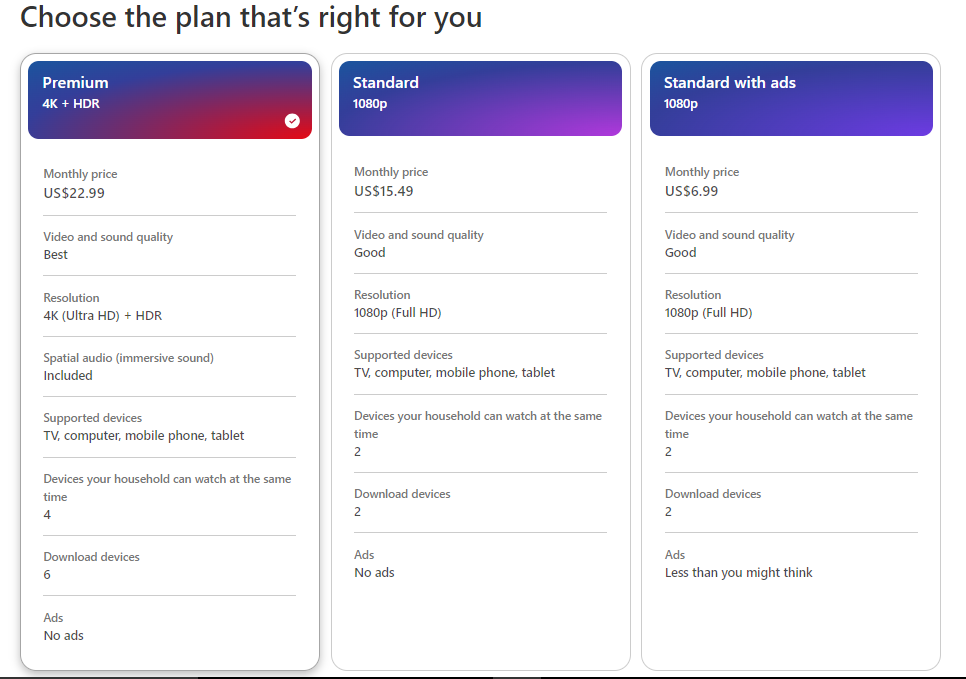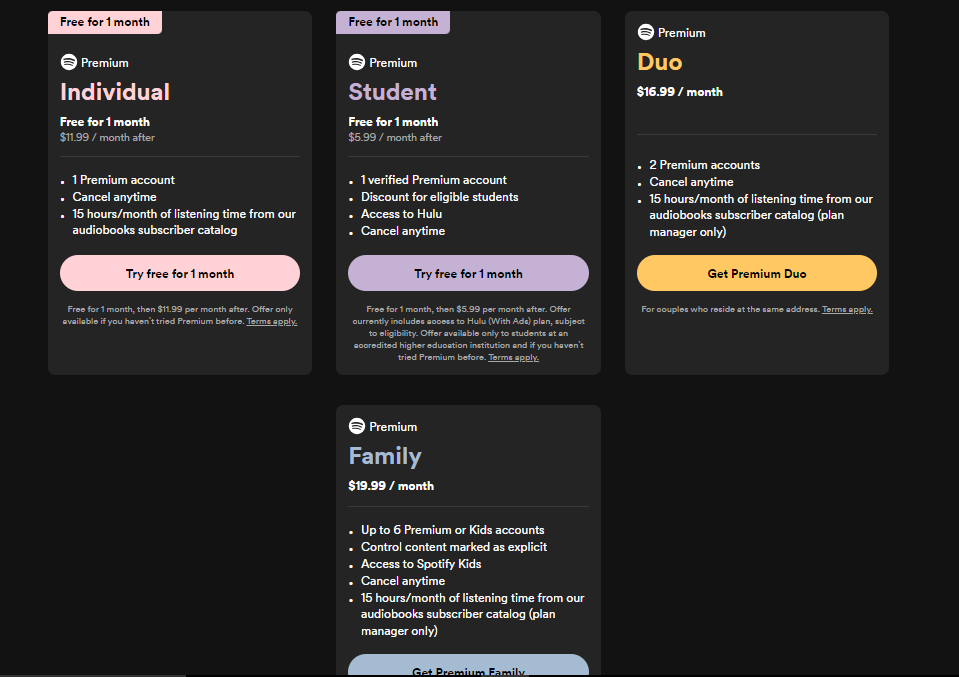Using Tiered Pricing to Grow Your Membership Site
Do you want to grow your membership site? Implementing tiered pricing could be the solution you need.
Imagine offering a product or service that appeals to budget-conscious individuals and those willing to pay a premium for exclusive features. This is the magic of tiered pricing. It allows you to provide multiple pricing options to meet your audience’s varied needs and budgets, thereby making your membership site more accessible and appealing.
Understanding and implementing tiered pricing can be a game-changer if you’re starting or looking to revamp your existing pricing structure.
In this article, we’ll explore the ins and outs of tiered pricing. We’ll cover everything from the basics of tiered pricing to its benefits and types, tips for adding tiered pricing to your membership site, examples of successful tiered pricing on membership sites, and common mistakes to avoid with tiered pricing.
What is Tiered Pricing?
Tiered pricing is a strategy businesses use to offer multiple levels of products or services at different price points. Each tier typically includes distinct features, benefits, or quantities, allowing customers to choose the best option for their needs and budget.
This approach is especially popular in subscription-based models, SaaS (Software as a Service) businesses, and membership sites.
Benefits of Tiered Pricing
Implementing tiered pricing can offer numerous advantages for your membership site, including:
Increased Revenue: By offering multiple pricing options, you can attract a broader audience, including those willing to pay more for premium features.
Enhanced Customer Satisfaction: Tiered pricing allows members to choose a plan that best fits their needs and budget, leading to higher satisfaction and retention rates.
Greater Flexibility: This strategy can accommodate various types of members, from casual users to premium users, by providing different levels of access and benefits.
Upselling Opportunities: You can encourage existing members to upgrade to higher tiers by highlighting each level’s additional value and features.
Improved Market Segmentation: With tiered pricing, you can better understand and cater to different segments of your audience, customizing your marketing and service efforts accordingly.
Competitive Advantage: Offering a range of pricing options can help you stand out in a crowded market, attracting members who might otherwise choose a competitor.
Types of Membership Tiers
When designing a membership site, you must create membership tiers that cater to different segments of your audience. Two effective approaches are quantity-based membership tiers and quality-based membership tiers. Understanding the distinctions of each can help you choose the right strategy for your business.
Quantity-Based Membership Tiers
Quantity-based membership tiers differentiate plans based on the usage or the number of units a member can access. This model is particularly effective for services or products consumed in varying quantities.
Examples:
Downloads:
- Basic Plan: Up to 10 downloads per month.
- Standard Plan: Up to 50 downloads per month.
- Unlimited Plan: Unlimited downloads
Storage:
- Basic Plan: 5 GB of storage.
- Standard Plan: 50 GB of storage.
- Premium Plan: Unlimited storage.
Access:
- Basic Plan: Access to 5 courses per month.
- Pro Plan: Access to 20 courses per month.
- Elite Plan: Unlimited access to all courses.
The advantages of implementing quantity-based membership tiers include:
Scalability: Members can choose a plan that fits their current needs and upgrade as their usage increases.
Fair Pricing: Heavy users pay more, ensuring the pricing is proportional to usage.
Flexibility: Members can start with a lower tier and move to a higher tier as their needs grow, reducing the barrier to entry.
Quality-Based Membership Tiers
Quality-based membership tiers offer varying service quality, features, or exclusivity levels. Each higher tier provides enhanced or additional benefits compared to the lower tiers.
Here’s a breakdown of what quality-based membership tiers typically entail:
Differentiated Offerings: Each tier provides different features, services, or benefits. Higher tiers offer more premium or enhanced features compared to lower tiers.
Price Variation: Each tier comes at a different price point, with higher tiers generally being more expensive due to the additional benefits offered.
Flexibility: Members can upgrade or downgrade their membership tier based on their evolving needs and preferences.
For example, a fitness club might offer:
- Basic Tier: Access to the gym and standard classes.
- Standard Tier: Includes all basic tier benefits plus access to premium classes and some personal training sessions.
- Premium Tier: Includes all standard tier benefits plus unlimited personal training, advanced classes, and additional wellness services like massages or nutrition consultations.
This system allows the club to cater to a broader audience by offering solutions that meet the varying expectations of different members.
Choosing the Right Model
Deciding between quantity-based and quality-based membership tiers depends on the nature of your membership site and your audience’s needs.
Here are some considerations:
Nature of the Product or Service: If your product or service can be consumed in measurable units (e.g., downloads, storage), a quantity-based model might be more suitable. For services where the value is derived from enhanced features or exclusivity (e.g., premium content, superior support), a quality-based model is likely more appropriate.
Audience Segmentation: Understand your audience’s preferences and usage patterns. Some members might prefer paying for more usage, while others might value premium features and customized services.
Revenue Goals: Consider how each model aligns with your revenue goals. Quantity-based tiers can generate incremental revenue through increased usage, while quality-based tiers can justify higher prices due to added value.
Tips for Adding Tiered Pricing to Your Membership Site
If you’re ready to add membership tiers to your site, follow these best practices:
Understand Your Audience: Before creating your membership tiers, it’s essential to understand the needs and preferences of your audience. Conduct surveys, analyze your current membership data, and gather feedback to identify what your members value most. This information will help you design your tiers to meet their needs effectively.
Define Clear Value Propositions: Each membership tier should offer a distinct and clear value proposition. Ensure that the benefits and features at each level are well-defined and attractive to different segments of your audience. Highlight the unique advantages of upgrading to a higher tier to encourage members to move up.
Keep It Simple: Avoid overwhelming your members with too many tiers. Stick to three or four tiers to keep the choices straightforward and easy to understand. Each tier should be a step up in value from the previous one, clarifying why an upgrade is beneficial.
Offer Tangible Benefits: Provide tangible and desirable benefits in each tier. These could include exclusive content, premium support, discounts, early access to new features, or personalized services. The higher the tier, the more valuable and exclusive the benefits should be.
Use Visual Aids: Visual aids like comparison tables or charts can help illustrate the differences between tiers. These tools make it easier for potential members to see the added value of each level at a glance, aiding their decision-making process.
Price Strategically: Set your prices based on the value provided at each tier and what your audience is willing to pay. Conduct market research to understand the pricing of similar memberships and ensure your tiers are competitively priced. Consider offering an entry-level tier at a lower price to attract more members and incentivize upgrades.
Offer Trials or Money-Back Guarantees: Reduce the risk for new members by offering a free trial or a money-back guarantee. This approach allows them to experience the value of your membership without immediate commitment, increasing the likelihood of them staying long-term.
Gather Feedback and Adjust: Regularly gather feedback from your members about their satisfaction with their current tier and interest in other tiers. Use this feedback to make adjustments and improvements to your tiered pricing structure, ensuring it continues to meet the evolving needs of your audience.
By following these best practices, you can effectively implement tiered pricing on your membership site, providing clear value to your members and optimizing your revenue.
Examples of Successful Tiered Pricing on Membership Sites
Let’s explore some real-world examples of membership tiers in action.
ProfilePress
Let’s begin with the one near and dear to our hearts: our membership plans.

Notice that ProfilePress provides a free plan, offering a risk-free opportunity for users to try out our plugin. We’ve also highlighted our most popular option—the Plus plan—which includes licenses for three sites and additional add-ons. Additionally, we offer a 14-day money-back guarantee.
Netflix
Netflix offers three tiers: Standard with ads, Standard, and Premium. Each plan offers different features, such as the number of screens that can be watched simultaneously and video quality.

Spotify
Spotify provides Individual, Student, Duo, and Family plans, each catering to different user needs and budgets, showcasing how tiered pricing can cater to a diverse audience.

Common Mistakes to Avoid with Tiered Pricing
We have shown you the benefits of Implementing a tiered pricing structure on your membership site, but avoiding certain pitfalls is important to ensure its success.
Here are some common mistakes to watch out for:
Overcomplicating Your Tiers: Offering too many pricing tiers can confuse potential members and overwhelm the decision process. Stick to a few well-defined tiers that differentiate the benefits and value of each level.
Ignoring Customer Needs: Failing to align your tiers with your target audience’s needs and preferences can lead to poor conversion rates. Conduct thorough market research and gather feedback to create tiers that resonate with your members.
Underpricing or Overpricing Tiers: Setting prices too low can devalue your offering, while setting them too high can deter potential members. Carefully analyze your market and competitors to find the right pricing balance.
Lack of Clear Value Proposition: Each tier should have a clear and compelling value proposition that justifies the price difference. Ensure that the benefits of upgrading to a higher tier are obvious and attractive to your members.
Ignoring Existing Members: When introducing tiered pricing, it’s crucial to consider how it will affect your current members. Communicate changes clearly and offer transition options or grandfathered pricing to maintain loyalty.
By avoiding these common mistakes, you can effectively implement a tiered pricing structure that will cause your membership site to grow.
Grow Your Membership Site by Implementing Tiered Pricing Today!
Implementing tiered pricing can revolutionize the attraction and retention of members on your site, as multiple pricing options can broaden your audience, increase revenue, and enhance customer satisfaction.
Take action today by analyzing your audience’s needs and preferences. Identify the key features and benefits that can be bundled into different tiers. Consider offering a basic tier with essential features, a mid-tier with added benefits, and a premium tier with exclusive perks.
Use clear and compelling messaging to highlight the value of each tier. Ensure your potential members understand what they’re getting at each price point and how it aligns with their goals. With this approach, you can grow your membership site effectively.
We hope this article helped you learn how to grow your membership site using tiered pricing.